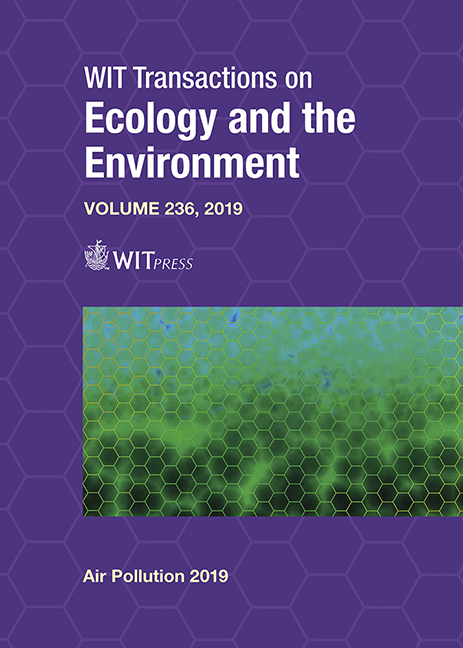ASSESSMENT OF SOURCE CONTRIBUTIONS TO THE URBAN AIR QUALITY FOR THE BRISTOL CLAIRCITY PILOT CASE
Price
Free (open access)
Transaction
Volume
236
Pages
10
Page Range
89 - 98
Published
2019
Size
337 kb
Paper DOI
10.2495/AIR190091
Copyright
WIT Press
Author(s)
KEVIN OLIVEIRA, VERA RODRIGUES, SILVIA COELHO, ANA PATRÍCIA FERNANDES, SANDRA RAFAEL, CARLOS FARIA, JOANA FERREIRA, CARLOS BORREGO, TROND HUSBY, IASON DIAFAS, PER SIEVERTS NIELSEN, XIUFENG LIU, ANGREINE KEWO, CARLO TROZZI, ENZO PISCITELLO, KRIS VANHERLE,
Abstract
The world’s population has been growing continuously, with most people inhabiting urban settlements. Furthermore, air pollution has become a growing concern, mainly in densely populated cities, where human health is threatened by acute air pollution episodes. The H2020 ClairCity project aims to substantially improve future air quality and carbon policies in European cities by initiating new modes of engaging citizens, stakeholders and policy makers. ClairCity applies an innovative quantification framework developed to assess environmental, health and economic impacts. In this work, the quantification framework was applied and calibrated for the baseline situation in Bristol, the ClairCity pilot city. The second-generation Gaussian model URBAIR was set up to simulate NO2 and particulate matter (PM) concentrations for the entire year of 2015. An analysis of source contribution was performed providing information on the contributions of different source sectors (e.g. road transport, industrial, residential and commercial) to NO2 and PM concentrations. The results point to a predominant contribution of road transport sector of 53% to NO2 concentrations in Bristol, while the residential sector is the main contributor (with a contribution of 82%) to particulate matter concentrations, mainly linked with a high use of solid biomass combustion in this sector. These results can be powerful to support the design of air quality management plans and strategies and to forecast potential benefits of reducing emissions from a particular source category.
Keywords
H2020 programme, ClairCity, air pollution reduction, citizens engagement, European cities, urban areas





